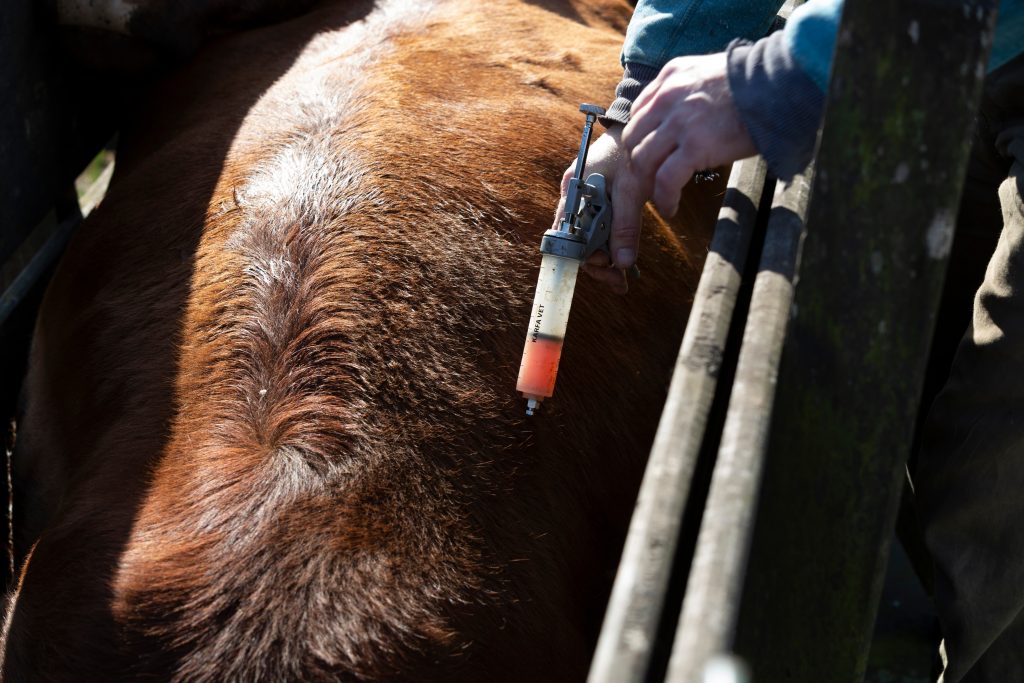
On today’s Cow-Calf Corner, Rosslyn Biggs, DVM, Oklahoma State University State Extension Beef Veterinarian, talks about core vaccines for cattle.
The American Association of Bovine Practitioners (AABP) provides guidance to their membership on vaccination guidelines identifying core vaccine for all cattle. The establishment of bovine core vaccines was created based on the major infectious agents that require protection in all types of cattle. The list is in no way permanent and will be regularly reviewed. Future changes to core vaccine recommendations may occur based on new scientific research, veterinary feedback, and evolving production practices. Veterinarians and producers alike are required to follow applicable federal and state regulatory regulations.
The core guidelines help establish a set of minimum requirements, however, there is no one-size-fits-all vaccination plan applicable to every farm and ranch. Specific, unique operation or herd vaccination plans, established by producers and veterinarians, insure the development of the best herd protection. A specific vaccination plan will be based on factors such as animal immune status, disease risk, biosecurity, and management availability. The best vaccine options will be those that provide protective immune coverage for diseases of concern balanced with a defined management timeline and expense.
The following bovine vaccines are considered core vaccines according to AABP guidelines for all beef and dairy cattle:
■ Infectious Bovine Rhinotracheitis virus (IBRV) (Bovine herpesvirus 1)
■ Bovine Viral Diarrhea Virus (BVDV)
■ Parainfluenza Virus (PI3)
■ Bovine Respiratory Syncytial Virus (BRSV)
■ Clostridial Vaccines (C. hemolyticum and tetani are not considered core, but are considered risk-based)
The AABP guidance also outlines vaccines that should be evaluated for inclusion into operation specific vaccination protocols based on risk of disease and benefits of vaccination. Cattle type, disease risk, operation location, biosecurity practices, and herd history are all factors considered when evaluating risk based agents such as Brucella abortus (Bangs) and Mannheimia haemolytica.
Producers are encouraged to sit down with their veterinarian and discuss vaccination protocols on a regular basis. The AABP vaccination guidelines are intended to help with this conversation. Specific, unique vaccination protocols customized to the operation, and even further to individual types of cattle on the farm or ranch, provide the best immunization coverage. When designing a plan, remember to include a periodic review schedule. Update the plan regularly with your veterinarian to take advantage of new scientific findings and economic solutions as disease threats continue to evolve.
Below, Rosslyn Biggs, DVM, OSU Extension beef cattle specialist, takes an in-depth look at handling and administering vaccines. This segments originally aired Jan. 22, 2022.














